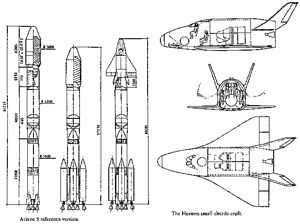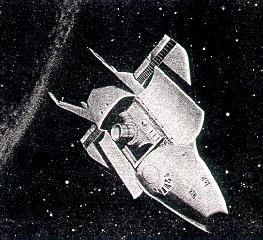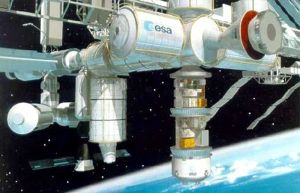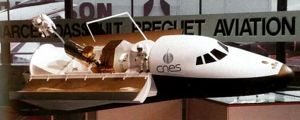
Home - Search - Browse - Alphabetic Index: 0- 1- 2- 3- 4- 5- 6- 7- 8- 9
A- B- C- D- E- F- G- H- I- J- K- L- M- N- O- P- Q- R- S- T- U- V- W- X- Y- Z
Hermes
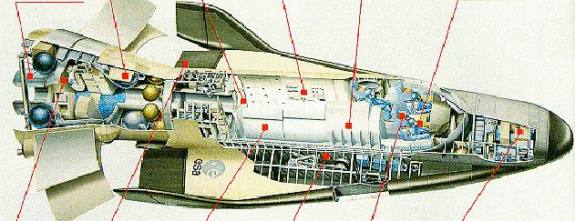
Hermes cutaway
Hermes cutaway drawing
Credit: ESA
Status: Cancelled 1992. Gross mass: 23,000 kg (50,000 lb). Height: 19.00 m (62.00 ft).
Hermes was to have been launched atop an Ariane 5 by 1998, but by 1992 estimated development costs rose to DM 12 billion and the project was cancelled.
The Hermes spaceplane began as a purely French project. As development costs increased, France managed to obtain other European funding, primarily from Germany, for development of the spacecraft. Hermes would have provided independent European manned access to space, and the weight growth of the spacecraft during design and development was a major driver in the specification for the Ariane 5 space launcher. Hermes was designed to take three astronauts to orbits of up to 800 km altitude on missions of 30 to 90 days in space. Payload to be returned to earth could be contained in a small payload bay, but most experiments were included in an expendable pressurized supply module, equipped with a docking port, mounted to the base of the glider. After the Challenger disaster many safety precautions were added, leading to yet further weight and cost growth. In an emergency the crew cab could have been separated from the remainder of the glider. Yet later the crew escape capsule idea was abandoned and replaced by three Martin Baker ejection seats to save weight. Hermes was to have been launched atop an Ariane 5 by 1998, but by 1992 estimated development costs rose to DM 12 billion and the project was cancelled.
The French space agency, CNES, started investigating a small spaceplane to be launched on top of the Ariane rocket -- 'Hermes'. By 1984, Hermes had evolved into a small mini-space shuttle capable of carrying a crew of 4-6 plus a 4500kg payload in its cargo bay. Hermes would be too heavy for the existing Ariane launch vehicle, so the French were looking at uprated Ariane-5 versions for the 1990s. The early Ariane-5 design from 1984 would have consisted of an existing booster stage from the Ariane-4 program. However, the upper stage rocket would be new. Burning highly efficient liquid oxygen and hydrogen propellant, it would have boosted the payload capability to more than 15t -- enough to launch Hermes as well as heavy communications satellites in the 1990s. The Ariane-5 project was finally approved in 1987, but by this time the design had evolved into a larger and totally new rocket.
Dassault and Aerospatiale submitted competing proposals for Hermes to the French national space agency CNES in April 1985. By this time the French aerospace industry and CNES were aggressively lobbying the European Space Agency to adopt the Hermes project as a pan-European 'new start' for the 1990s.
The French national space agency CNES awarded the prime industrial contract to Aerospatiale in October 1985. The losing bidder, Dassault-Breguet, would be responsible for the spaceplane's aerodynamic design. CNES expected the total program cost to be about $1.9 billion, including $1.1 billion for development and construction of two vehicles. France hoped 50% of the funding would come from other ESA countries. Aerospatiale's Hermes cockpit proposal from 1985 was based on the same computer displays as the Airbus commercial airliner. When ESA started its preliminary Phase B2 study in May 1986 the estimated cost of Hermes was $1.5 billion plus $1.9 for its Ariane-5 carrier rocket. ESA agreed to a $35-million contract extension in October 1986 to define the mini-shuttle's use and mission roles. The French government announced it would finance 45% while the Germans approved a 30% share.
Both projects were approved as new ESA projects in November 1987. The total cost in 1988-2000 was expected to be $3.36 billion for Ariane-5 with a first launch in 1995 and two further qualification flights. Hermes would cost $4.25 billion, including two qualification flights on the Ariane-4 starting in mid-1998. However, the Space Shuttle Challenger disaster in 1986 greatly affected the Hermés/Ariane-5 design. The crew size was reduced 50% to three astronauts since the cabin was made ejectable. The payload mass had to be reduced from 4550kg to 3000kg inside a pressurized cargo compartment. The launch weight of the spaceplane was now 21t and the Ariane-5 had to be uprated to launch it. The rocket's solid boosters would now contained 230t of propellant instead of 190t, and the central core would contain 155t of liquid rocket propellant instead of the original 140t.
The program's $530-million 'Phase 1' detailed definition lasted from March 1988 to February 1990. Crew safety and unplanned weight growth were major problems. The designers initially considered a Crew Escape Module that would have cost 400 million ESA Accounting Units (MAU), then looked at smaller 50-MAU encapsulated ejection seats derived from German 'Mikroba' capsules. ESA finally settled for ordinary ejection seats instead of an ejectable cabin, although they would not be able to save a crew above 22-29km altitude.
By late 1990 the Germans wanted to leave the French-led Hermes program, but this was easier said than done because the primarily German MTFF program would not be feasible without its Hermes 'space taxi.' In December 1988, ESA decided to move some systems into an expendable aft-mounted docking module that would be jettisoned before returning to Earth. The new design was smaller and lighter, but the marginal cost per launch would be higher due to the expendable components.
At the end of Phase 1, ESA decided to delay the formal go-ahead for the Phase 2 program to July 1991. By this time the project was estimated to cost $4.5 billion and was employing 1,500 persons. France contributed 43.5% of the funding, followed by Germany at 27% and Italy at 12.1%. The first unmanned mission would take part in 1998. ESA also announced that the management would be reorganized to keep the project on schedule. The separate ESA and CNES teams would be merged and form a joint venture. The four industrial prime contractors also announced a joint management company -- 'Euro Hermespace' -- in November 1990 for development and production of the spaceplane. Aerospatiale's and Dassault's participation would be through a new company called Hermespace France, in which Aerospatiale would hold 51% of the shares. Hermespace France would control 51.6% of Euro Hermespace followed by 33.4% by Germany's DASA and 15% by Italy's Aeritalia. The company's staff (150 persons) was to be located in Toulouse, France.
In 1991 it was becoming increasingly obvious that Hermes and Columbus were heading for the rocks. The spaceplane was now estimated to cost $1.33 billion more than the $4.72 billion 1989 estimates and ESA considered delaying the project by two or three years, to 2001. Hermes was overweight, and increasing the Ariane-5 launcher's performance would cost an additional $666 million.
The November 1991 ESA meeting in Munich, Germany, only managed to postpone the difficult decisions by another year as Germany, France and Italy failed reach agreement on which projects should be cut. ESA did decide Hermes would now make its first unmanned flight in 2002 at the earliest, followed by a manned test mission in 2003. Total costs of the program would be $7.663 billion plus $4.576 billion for its Ariane-5 launch vehicle.
In 1992 it was decided to reduce Hermes to a $1.9-2.3 billion 'Hermes X-2000' unmanned technology demonstration, possibly as a joint European-Russian program to further reduce costs by 20%. The November 1992 meeting in Granada, Spain, finally pulled the plug on 'Hermes X-2000' too, reducing the program's 1993-98 budget from $1.8 billion to $405 million. The money was to be spent on paper studies of a joint ESA/Russian Hermes, $54 million for studies of a US/European Crew Rescue Vehicle, and $112 million for pure ESA in-house manned spaceflight options. A total of $2 billion had been invested in Hermes when the project was cancelled.
Crew Size: 3. Orbital Storage: 90 days.
| STAR-H French winged orbital launch vehicle. Mach 6 hypersonic first stage would launch Hermes spaceplane with an expendable second stage. |
Family: European Rocketplanes, Space station orbit, Spaceplane. Country: France. Launch Vehicles: Ariane 5, Ariane 5G. Agency: Dassault, ESA.
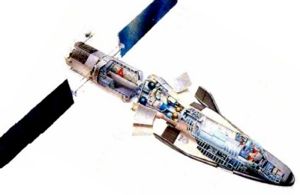 | ESA MTFF 1991 Credit: ESA via Marcus Lindroos |
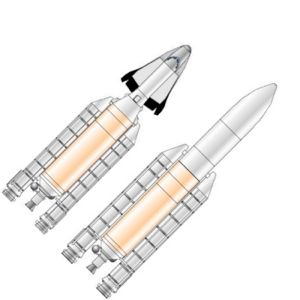 | Ariane 5 Original design of Ariane 5 with Hermes manned spaceplane and first production Ariane 5G. Credit: © Mark Wade |
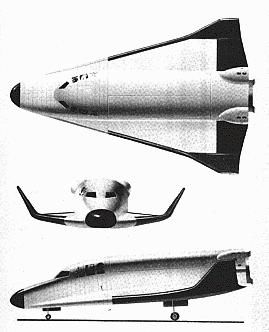 | Hermes 3 View Credit: ESA |
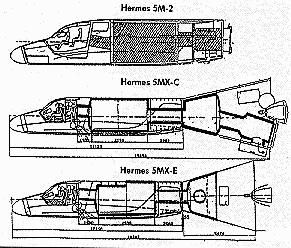 | Hermes variants Credit: ESA |
 | ESA Station ESA. Credit: ESA via Marcus Lindroos |
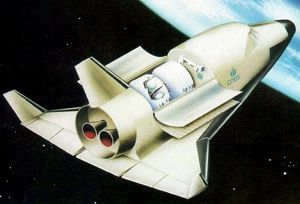 | Hermes 1985 CNES Hermes - Aerospatiale,1985. Aerospatiale's Hermés proposal from 1985. Credit: ESA via Marcus Lindroos |
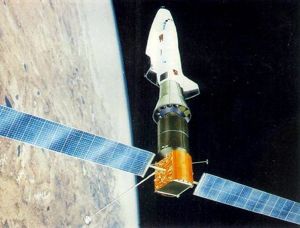 | Hermes / MTFF 1990 Hermes & Man-Tended Free Flyer In 1990S. Hermés and the MTFF at the end of the definition phase in 1990. Credit: ESA via Marcus Lindroos |
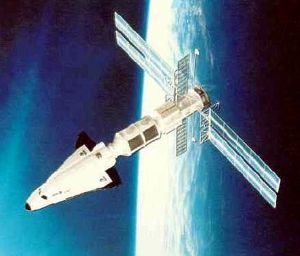 | Hermes / MTFF 1989 Hermes & Man-Tended Free Flyer In 1990S. Model of the Hermés mini-shuttle and Columbus man-tended free-flying (MTFF) platform. Credit: ESA via Marcus Lindroos |
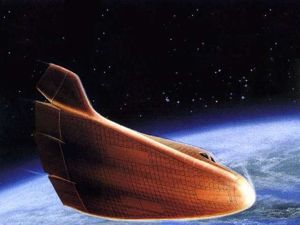 | Hermes 1989 Hermés returns to Earth. Credit: ESA via Marcus Lindroos |
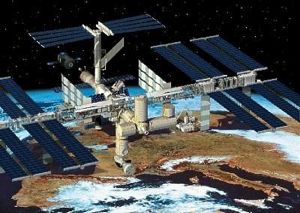 | ESA's Space Station ESA's Space Station Reorganisation - 1993-95. The International Space Station (ISS) over Europe. Credit: ESA via Marcus Lindroos |
 | Hermes Credit: NASA via Marcus Lindroos |
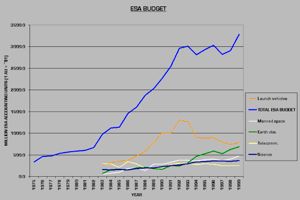 | ESA Budget Credit: Marcus Lindroos |
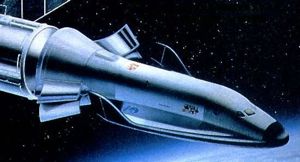 | Hermes Credit: ESA |
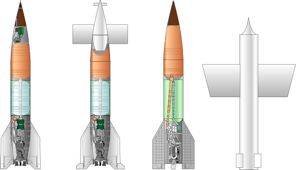 | Hermes Credit: (c) Mark Wade |
Back to top of page
Home - Search - Browse - Alphabetic Index: 0- 1- 2- 3- 4- 5- 6- 7- 8- 9
A- B- C- D- E- F- G- H- I- J- K- L- M- N- O- P- Q- R- S- T- U- V- W- X- Y- Z
© 1997-2019 Mark Wade - Contact
© / Conditions for Use
